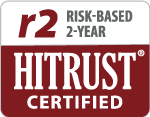The complexity of today’s U.S. healthcare system presents significant challenges for self-navigating patients, who too often slip through the cracks. According to the American Journal of Medicine, insufficient care coordination is linked to suboptimal care and poor outcomes, ultimately increasing average costs for chronic disease management by as much as $4,500 per patient over a three-year period.
Fortunately, an effective solution is in reach to manage patients more efficiently across today’s complex networks, leveraging a combination of the right technology paired with trained patient care coordinators. This white paper explores how organizations can create “connectedness,” deploying a network activation hub between hospitals, post-acute and community providers to help manage patient flow and guide patient coordinators in their daily tasks.
Just some of the benefits include:
- Creating an electronic connection between acute and non-acute providers
- Tracking risk-managed populations with defined care management protocols
- Managing workflows beyond the capabilities of hospital EHRs
- Augmenting staff to offload non-clinical logistics activities
- Increased insight into follow-up care post discharge, and patient attrition

